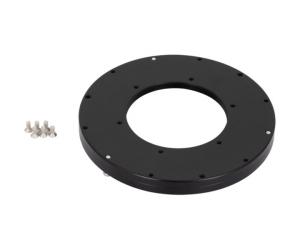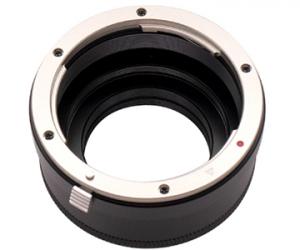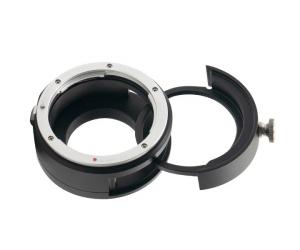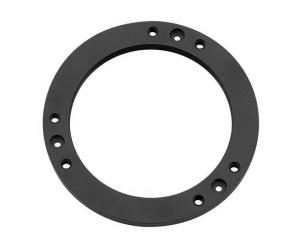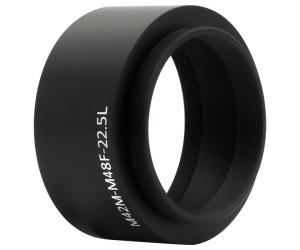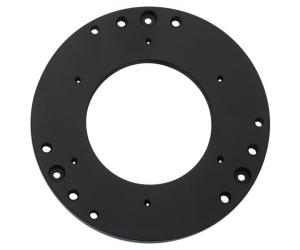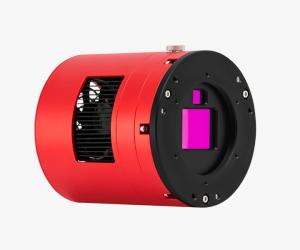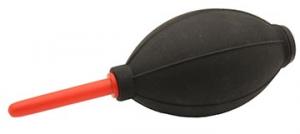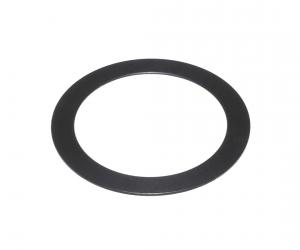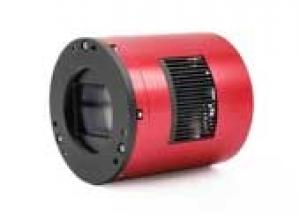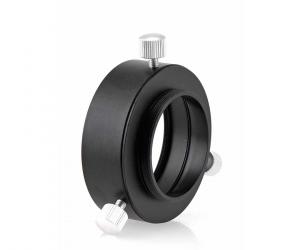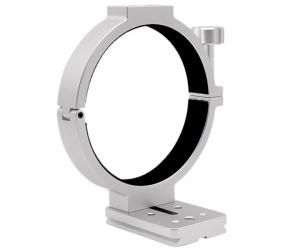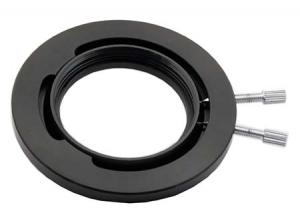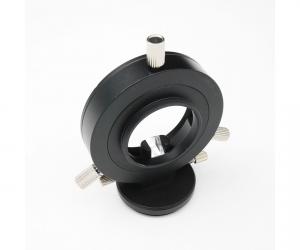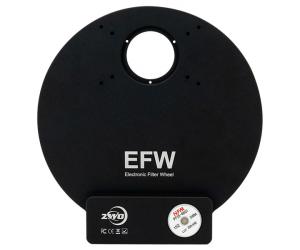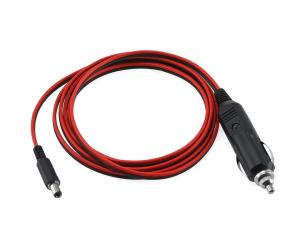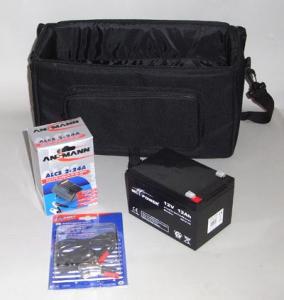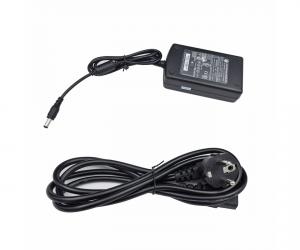- Telescopes
- Overview:
Telescopes - Achromatic Refractor
- Apochromatic Refractor
- Overview:
Apochromatic Refractor - ED Refractor - less color aberration than an achromatic
- SD APO - color free 2-element APO objective
- EDT APO - 3 element ED objective
- High End APO with 3-element APO objective - no color aberation
- Flatfield APO with flat field for Astrophotography
- All Apos and EDs from all manufacturers - large overview
- TS APO and ED from Japan with high quality optics
- Overview:
- Newtonian Telescopes
- Dobsonian Telescopes
- RC Ritchey Chretien Telescopes
- Casssegrain Telescopes
- Reflektor Telescopce with Lens Correcture
- Maksutov Cassegrain Telescopes
- GoTo Telescopes
- Solar Telescopes H-Alpha
- Overview:
- Mounts Tripods Rings Rails Power Supply ...
- Overview:
Mounts Tripods Rings Rails Power Supply ... - Mounts Equatorial with GoTo
- Mounts Equatorial without GoTo
- Mounts Azimutal with GoTo
- Mounts Azimutal without GoTo
- Mounts GoTo - Harmonic Drive
- Travel mounts for astro imaging
- Tripods Piers Polar Wedges
- Mount Control & Electronics
- Dovetail Clamps, Plates and Mount Adapters
- Tube Rings
- Power Supply
- Counterweights Balance Weights
- Mount Accessories - Other
- Overview:
- Telescope Accessories
- Overview:
Telescope Accessories - Eyepieces
- Barlows & Reducer Lenses
- Diagonal Mirrors and Prisms
- Binocular Viewers
- Finder Scopes
- Telescope Collimation and Test
- Cleaning Tools
- Transport and Storage
- Dust protection for Telescopes & Accessories
- Stray Light Protection
- Dewcaps and Heater
- Focusers, Adapters, Motorfocus
- Telescope DIY & Improvement
- Other telescope accessories
- Replacement Parts
- Overview:
- Filters
- Overview:
Filters - Color Filters and Color Filtersets
- Nebular Filters for Visual Observing
- Neutral-Density and Polfilter
- Photo Narrowband Nebular Filters
- Photo Broadband Filters
- Photo Planetary Filters
- Photo R-G-B and IR Cut Filters
- Photo - Filtersets
- Photometric Filters
- Clip Filter for DSLR Cameras
- Filter Wheels and Filterslider
- Solar Filters for white light
- Solarfilter for H-Alpha and Calcium
- Overview:
- Adaptors
- Overview:
Adaptors - Adapter 1,25" and 24,5mm
- Adapter 2"
- Adapter T2 - M42x0.75
- Adapter M48x0,75
- Adapter M54
- Adapter SC
- Adapter M63
- Adapter M68
- Adapter to other Threads
- Adapter Extensions
- Adapter camera bayonet
- Adapter Objective Filterthread
- Adapter Quick Changing , Rotation
- Adapter Eyepiece Projection
- Adapters Tilting
- Overview:
- Astrophotography and Photography
- Overview:
Astrophotography and Photography - Cooled Cameras
- Cameras without Cooling
- Deep-Sky Cameras uncooled
- Set-Offers Camera, Filter, Wheels
- Acessories for Cameras
- Travel mounts for astro imaging
- Imaging Correctors for Telescopes
- Autoguiding Cameras & Sets
- Everything for Guiding
- Focusing aids - Bahtinov mascs
- Flat Field foils and boxes
- Lenses for Cameras
- Piggyback Camera Holder
- Camera Bags, Photocases & more
- Digital Camera and Smartphone Adapter
- Other photo accessories
- Overview:
- Binoculars, Spotting Scopes, Microscopes, Range Finders
- Overview:
Binoculars, Spotting Scopes, Microscopes, Range Finders - Roof Prism Binoculars
- Binoculars with Porro prisms
- Binoculars from 100mm Aperture
- Binoculars with 1,25 inch eyepieces
- TSMX APO Binoculars
- Binoculars for Astronomy
- Binoculars Hiking Bird watching
- Monoculars - Opera Binoculars
- Accessories for Binoculars
- Spotting Scopes
- Range Finders
- Microscopy
- Bags for Phototripods & Binoculars
- Overview:
- Phototripods and Binomounts
- Books, Software
- Overview:
Books, Software - Books for Astronomy Beginners
- Star Charts and Planispheres
- Books about our Solar System
- Observing Tips for Amateurs
- Popular Astronomy Literature
- Teaching material
- Astrophotography books
- Telescopes, Observatories, Construction
- Calendars Yearbooks
- Software, Star Charts
- Books for Microscopers
- Books Nature and Animals
- Nature Photography TimeLapse
- Overview:
- Night Vision, Magnifiers, Weather, Domes & more
- Beginner Astronomy and Gift Ideas
- Second Hand & Special Offers
- New products
Manufacturer: ASI - ZWO
Product number: ASI2600MM-P
EUR3150.00new
EUR 3.150,00
incl. 19 % VAT (DE)
The VAT indicated refers to that applicable in Germany. After logging in, the VAT amount is adjusted to the applicable VAT of the stored delivery country. Therefore, the final price may vary accordingly.
excl. 6.95 € shipping costs (DE)
more details to the shipping costs ...Please log in to calculate shipping costs to your country.
rating: 4.0 of 5ZWO MONO Astro Camera ASI 2600MM-PRO cooled, Sensor D= 28.3 mm1
- Details..
- Technical data..
- In the box..
- Reviews..
- FAQ..
- Manufacturer infos..
- Safety informations..
ZWO ASI2600MM Pro - powerful mono astro camera of the latest generation
ZWO has taken another step forward with this new camera. The mono sensor in APS-C format convinces with its extremely high sensitivity and 16-bit data depth. Even with longer exposure times, the stars will not burn out. You get a much better dynamic.One of the outstanding features of the ASI 2600MM Pro is its sensational light sensitivity. The QE of 91 % by the BACK ILLUMINATION technology and the non-existent amplifier glow make the camera very suitable for all astronomical applications, but especially for deep sky astrophotography.
Further advantages and product features of the ASI 2600MM Pro monochrome camera:
Application areas of the camera:
Back illumination technology
Sony´s back-illuminated CMOS image sensor improves sensitivity and noise reduction - the key factors to enhancing image quality, while radically realigning their fundamental pixel structure from front-illumination to back-illumination. It has retained the advantages of CMOS image sensors such as low power consumption and high-speed operation.The backside exposure improves the light absorption and increases the amount of light at the same time. This allows significantly shorter exposure times and leads to an improved quantum efficiency of 91 %.
Sony has newly developed a unique photo-diode structure and on-chip lens optimized for back-illuminated structures, that achieves a higher sensitivity and a lower random noise without light by reducing noise, dark current and defect pixels compared to the conventional front-illuminated structure.
Zero amp glow
Traditional CMOS sensors produce a weak infrared light source during operation quite often seen in the corner of uncalibrated images as the tell tale signs of "amp glow". As the ASI2600MM Pro uses zero amp glow circuitry, you won´t have to worry about amp glow even when using high gain, long exposure imaging.Anti-dew heater integrated
The ASI2600MM Pro comes with the polyimide heater that can avoid any dew problems.The anti-dew heater, which fits completely onto the protective window, heats it up slightly to prevent condensation problems.
The power of the anti-dew heater is approx. 5 W. It can be turned off in the software to save power.
Important: external power supply required!
This camera requires 1 amp even in uncooled operation, which is a problem for USB sockets on computers, because they are only rated for 900 mA (0.9 A).Stable operation of the camera is therefore only possible with an external 12 V power supply.
Optimal support before and after the purchase through Teleskop-Service:
We work with the cameras ourselves and can offer you optimal advice. Which camera fits to your telescope, how do you achieve the optimal adaptation? Teleskop-Service is one of the largest ZWO dealers. Through our contacts we also offer the best possible service after the purchase.Practical tip 1 from TS: Integration of 2" filters, 360° rotation and quick coupling
The camera is often used on correctors that do not have a filter thread. In addition, the filters should always be used as close as possible to the camera. Here we offer you a solution that can do much more.The adaptation is very simple, the 21 mm T2 extension is replaced by:
One tuning ring comes to the camera side, one tuning ring comes to the telescope side of the rotator. Then screw on the M42-M48 adapter with 16.5 mm length and you are in the right distance with the camera.
Practical tip 2 from TS: Storage of cameras and accessories
Especially in our latitudes, the nights are often very humid. This humidity condenses on your camera, eyepiece or filter when they come into the warm interior of the apartment. Especially cooled cameras are affected by this. Quickly a photo session is over because the sensor ices up.Good storage is an important prevention against dew and also extends the life span.
After use, put the camera immediately into the TS Protect Case and add some silica gel. During storage, the silica gel will suck the moisture out of the camera. At the same time, the penetration of humid room air is prevented. Dry storage even allows the small dry tablets in cooled cameras to partially regenerate. Your camera or accessories are always ready for you in optimal condition. You can find the silica gel and the case in our product recommendations.
The cameras are not airtight, so if the camera remains on the telescope, it is exposed to moisture. The small amount of desiccant in the camera can protect the sensor and the inside of the protective glass from moisture for the duration of the exposure, but not for days on end. Moisture problems can be the result. A simple trick is to stretch a plastic bag around the focuser to which the camera is attached so that no air can get in. Silica gel is placed in a small cloth bag inside the plastic bag. This will also create a "dry climate zone" for the camera on the telescope. This allows you to leave the camera on the telescope for a few days for an imaging session lasting several days.
In the medium and long term, however, this is no substitute for proper storage in an airtight case with silica gel.
Downloads, drivers:
ZWO provides software and drivers online for free download.Software and drivers for all ZWO cameras
Frequently asked questions about ZWO cameras:
The FAQ area is constantly updated by ZWO, here you will find answers to many questions.FAQ about ZWO cameras
ZWO Users Forum
Manuals for ZWO products:
The manuals page is constantly updated by ZWO, here you can find user guides for ZWO products.Link to the manuals
How to clean my ZWO camera:
The manufacturer provides a manual that covers how to clean an ASI camera and regenerate the desiccant tablets: Please click here.Astrophotographic results obtained with this camera on Astrobin
Here you can find some astrophotographs made with this camera model: Link to Astrobin| Sensor: | Sony IMX571 (back-illuminated CMOS mono sensor) |
| Sensor size: | 23.5 mm x 15.7 mm, diagonal 28.3 mm |
| Pixel size: | 3.76 µm |
| Resolution: | 26 megapixels |
| Pixel array: | 6248x4176 pixels |
| Exposure Range: | 32 µs to 2000 s |
| Frame rate: | 3.51 fps |
| ADC: | 16 bit |
| Cooling: | Powerful Peltier cooling - 35 °C below ambient |
| Full well: | 50 ke |
| Readout noise: | 1.0 to 3.3 e- |
| Sensitivity: | Peak 91 % QE |
| Zero amp glow design: | Yes |
| Window type: | anti-reflective coated |
| Anti-dew measures: | Anti-dew heater, 5 W, can be turned off |
| Data interface: | USB3.0 (USB2.0 compatible) |
| DDR3 buffer: | 512Mb |
| Power consumption: | 12 V, 3 A (power supply not included) |
| Telescope connection: | M42x0.75 female thread |
| Working distance from female thread to sensor: | 17.5 mm |
| Diameter: | 90 mm |
| Length: | 97 mm |
| Weight: | 0.7 kg |
Astrophotographic results obtained with this camera on Astrobin
Here you can find some astrophotographs made with this camera model: Link to AstrobinPhotographic results by Andreas Tofahrn:
 Heart Nebula (IC 1805)
Heart Nebula (IC 1805) Soul Nebula (IC 1848)
Soul Nebula (IC 1848) Elephant´s Trunk Nebula (IC 1396)
Elephant´s Trunk Nebula (IC 1396)We thank Andreas Tofahrn for these beautiful images!
In the meantime, Andreas Tofahrn has completed a special project, called a "normalized Messier catalogue". This can be found, along with an explanation of what that is exactly, on his corresponding webpage.
Question:
Camera control via Sharpcap possible?
Answer from Teleskop-Service:
It is possible to control the camera with Sharpcap, for this purpose the latest version of Sharpcap must be requested. (as of February 6, 2020)
Question:
Why does ZW Optical recommend a maximum gain of 100?
Answer from Teleskop-Service:
At a value of 100 the HCG High Gain mode is activated, which drastically reduces the readout noise without reducing the dynamic range too much. A higher gain does not result in a significant reduction of the readout noise anymore, but successively reduces the dynamic range.
Question:
Will my Pro camera work without extra power supply if I don´t turn on the cooling?
Answer from Teleskop-Service:
No, the current Pro cameras always require extra power supply, even without cooling.
| Manufacturer / Importeur: | Teleskop-Service Ransburg GmbH |
| Street: | Von-Myra-Str. 8 |
| ZIP / City: | 85599 Parsdorf |
| Country: | Germany |
| Telefon number: | +49 89 99228750 |
| Email: | info@teleskop-service.de |
| Website: | www.teleskop-service.de |
Safety informations: PDF Download
Recommended accessories
Adaptation Suggestion
Adaptors
Alternatives to this product - Suggestions from TS
ZWO Monochrome Camera ASI2600MM Duo - Sensor D=28.3 mm - with Guiding Sensor
EUR 3.254,00RRP EUR 3.384,00you save 3.8% (EUR 130,00)
Cleaning & Collimating
Customers who bought this product also bought...
ZWO Color Astro Camera ASI 2600MC-PRO cooled, Sensor D= 28.3 mm
EUR 2.183,00RRP EUR 2.590,00you save 15.7% (EUR 407,00)
General Accessories
Photo Acessories
ZWO Electronic Filter Wheel for 7x 36 mm filters - larger version
EUR 399,00RRP EUR 429,00you save 7% (EUR 30,00)
Power Supply
Transport & Covers
TS-Optics Protect Case waterproof hard case - width 271 mm
EUR 34,98RRP EUR 44,95you save 22.2% (EUR 9,97)
Reviews
Written by Michael Nekludov
on 2021-04-23
"This order was actually replaced by another camera."
















